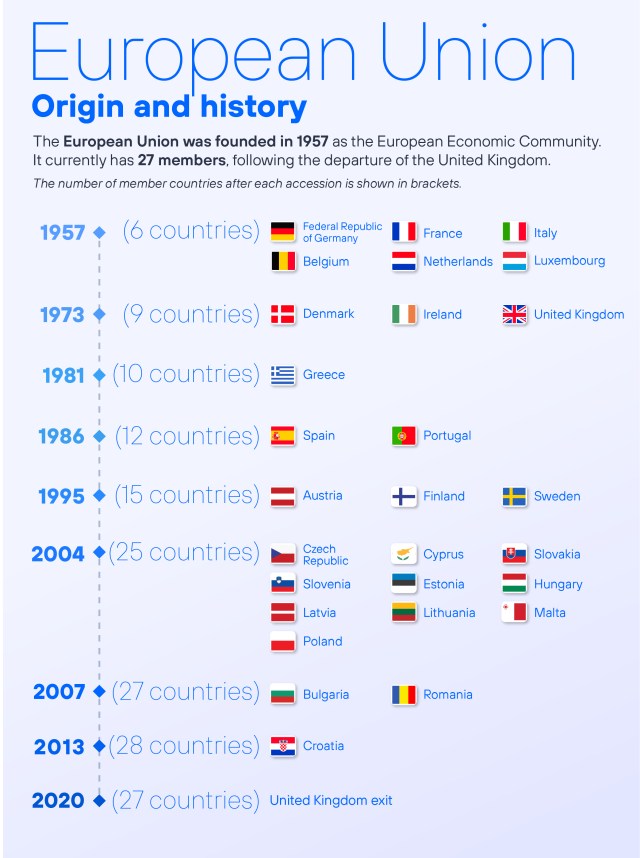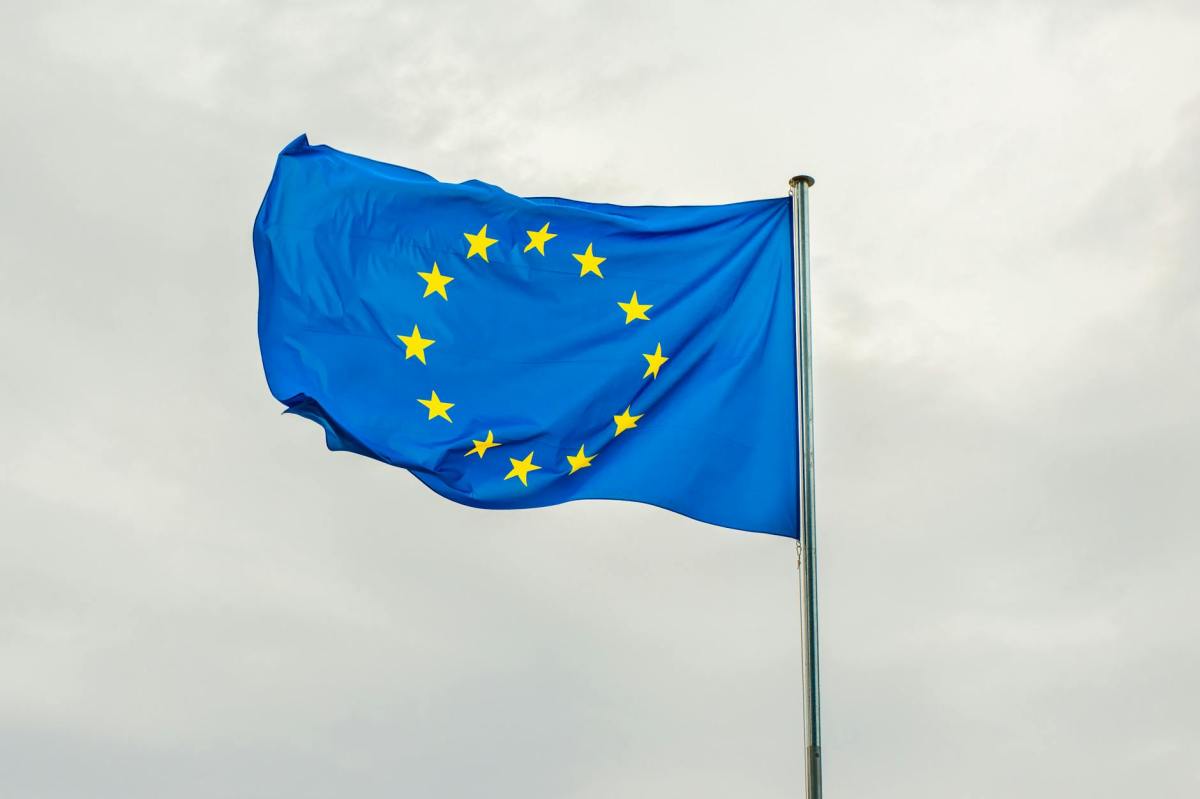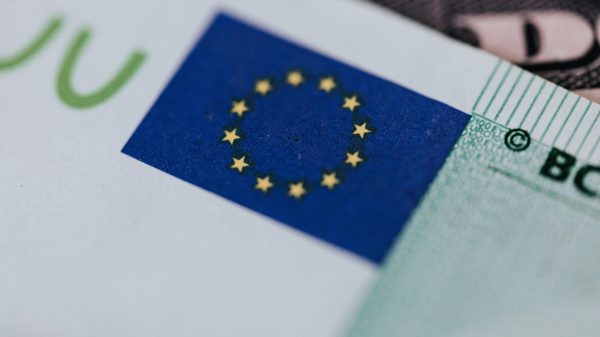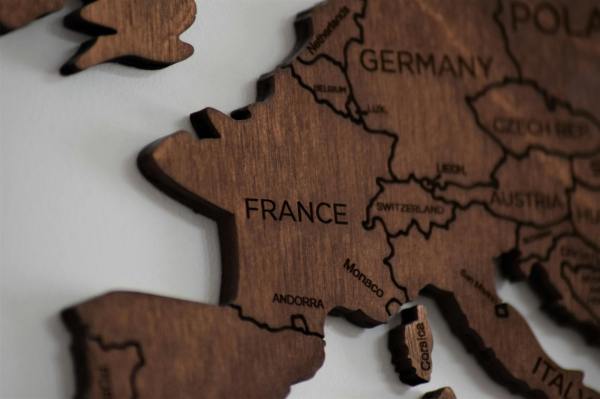Earlier origins of the European Union: the end of World War II
The history of the European Union dates back, according to its own website, to the end of World War II in 1945, a time when Europe was devastated with millions of people killed, wounded or displaced.
This situation is seen as an unofficial turning point in moving towards a process of integration of the Old Continent in the construction of a supranational entity that eventually led to what we know today as the European Union.
1951: Economic Community of Coal and Steel
On the basis of a peaceful Europe, the French Foreign Minister Robert Schuman made a famous speech (known to posterity as the Schuman Declaration) on 9 May 1950.
Among other things, the French politician proposed the creation of the Economic Coal and Steel Community (ECSC) to jointly manage the production of these materials.
An issue he literally put forward as something that ‘will change the destiny of those regions, which for so long have been engaged in the manufacture of weapons, of which they themselves have been the first victims’.
The ECSC was finally created in 1952, following the signing of the Treaty of Paris in 1951, thus becoming the first of the supranational institutions that would eventually lead to the European Union. Originally, the six member states were the Federal Republic of Germany, France, Italy and the three Benelux countries of Belgium, the Netherlands and Luxembourg.
Schuman’s speech has come to be regarded as the origin of the EU, and the date on which it was delivered has even become the date of Europe Day: 9 May.

European Union countries
1957, Treaty of Rome. The European Economic Community (EEC) and the European Atomic Energy Community (Euratom) are born
In view of the success of the ECSC, the group of six countries decided to broaden the scope of their collaboration by signing two treaties in Rome on 25 March 1957: the Treaty establishing the European Economic Community (EEC) and the Treaty establishing the European Atomic Energy Community (Euratom).
Both came into force on 1 January 1958, the same year in which the European Parliamentary Assembly was born, an institution which in 1962 took on its present name: the European Parliament.
Early 1960s: free trade and common agricultural policy
In 1960, the European Free Trade Association was created with the aim, as its name suggests, of promoting free trade and economic integration between non-EEC countries, namely Austria, Denmark, Norway, Portugal, the United Kingdom, Sweden and Switzerland. Following the integration into the EU of some of them and new incorporations, in 2020 the members include, in addition to those belonging to the institution, Iceland, Liechtenstein, Norway and Switzerland.
In 1962 the first common agricultural policy is signed, so that the EEC countries jointly control food production.
Merger and customs union
In 1965, the Treaty establishing a single Council and a single Commission of the European Communities was signed in Brussels (with effect from 1967), resulting from the merger of the ECSC, the EEC and Euratom. The European Communities thus came to have a single administrative arm (the Commission) and an executive arm (the Council).
Shortly afterwards, in 1968, the Customs Union was launched, whereby the six member countries allowed free cross-border trade for the first time by eliminating customs duties.
The 1970s: first accessions and direct elections to the European Parliament
In 1973, a year marked by the oil crisis, the first accessions in the history of the European Communities took place. The original six states became nine after the inclusion of Denmark, Ireland and the United Kingdom.
The end of the decade brought the novelty of the first direct elections to the European Parliament. Until 1979 the system of election was by delegates elected by the respective national parliaments.
The 1980s: the number of member states reaches a dozen.
The 1980s brought as a novelty the incorporation of three states that had abandoned their military dictatorships in the previous decade. Thus, Greece in 1981 and Spain and Portugal in 1986 increased the number of members to a dozen.
This decade saw other new developments, such as the launch in 1987 of the Erasmus programme, which has given more than ten million people the opportunity to train, study, volunteer or even gain work experience outside their country of origin… among other things.
1990s: the EU is born, the Schengen area is created and the euro is introduced for commercial and financial transactions.
1992: Maastricht Treaty. The European Union is officially born
It was not until 1993 that the European Union officially came into being, following the signing of the Maastricht Treaty the previous year.
The rules for the single currency, security and foreign policy and close cooperation in both internal affairs and justice are laid down in the Dutch city.
1995: enlargement to 15 and movement without frontiers
In the middle of the decade, the European Union, now known as the European Union, grew to 15 states after the accession of Austria, Finland and Sweden.
Likewise, in 1995, border-free movement began in seven countries, known as the Schengen Area, named after the Luxembourg town where the agreement of the same name was signed a decade earlier.
In 1995 there were seven countries (Belgium, France, Germany, Luxembourg, the Netherlands, Portugal, Spain and the Netherlands), while today there are 29: 27 EU countries (all except Ireland and Cyprus) plus Iceland, Liechtenstein, Norway and Switzerland.
Late 1990s: Treaty of Amsterdam (1997) and creation of the euro (1999)
In 1997 the Treaty of Amsterdam (which came into force in 1999) was signed, replacing the Maastricht Treaty as the EU’s new legal framework. It was the third major reform of the EU’s founding treaties, with the aim of giving Europe a greater role in the world and devoting more resources and rights to its citizens.
The euro came into being in 1999, although only for financial and commercial transactions, and the use of banknotes and coins came into operation in 2002. The euro area currently comprises 20 EU countries (excluding Denmark, Sweden, Bulgaria, Hungary, Romania, the Czech Republic and Poland), as well as Andorra, the Vatican City, Monaco, San Marino, Montenegro and Kosovo.
Treaties of Nice (2001) and Lisbon (2007)
At the turn of the century, in 2001, the Treaty of Nice (implemented in 2003) was signed, reforming the EU’s institutional structure to meet the challenges of the enlargements that were to come in that decade, giving more legislative and supervisory powers to the European Parliament and extending qualified majority voting in the Council to a larger number of areas.
In 2005, voters in France and the Netherlands reject the European Constitution in a referendum.
Two years later, the Lisbon Treaty amends the previous ones, seeking to make the European Union ‘more democratic, efficient, transparent and capable of meeting global challenges such as climate change, security and sustainable development’.
Enlargements to 25, 27 and 28… to go back to 27
On the enlargement front, 2004 brings the largest enlargement in history, with the addition of a dozen states. Specifically, the island countries of Cyprus and Malta along with the Czech Republic, Slovakia, Slovenia, Estonia, Hungary, Latvia, Lithuania and Poland from the former Soviet zone of influence.
Three years later, two more countries from this geographical region joined (Romania and Bulgaria), bringing the total to 27, a number that grew to 28 in 2013 with the entry of Croatia.
However, 2016 brought the news that, for the first time in history, the European Union was going to subtract a member rather than increase its membership. Specifically, the United Kingdom. In a close referendum, 52% of the British decided to leave the supranational body that it had joined in 1973.
The effective exit (Brexit) will take place on 31 January 2020, at which point the EU will once again have 27 member states.
As a curiosity, in 2012 the European Union received the Nobel Peace Prize in ‘recognition of more than six decades of promoting peace, reconciliation, democracy and human rights’.
The next EU cycle 2024-2029 will be accompanied by discussions on a possible enlargement of the Union.











